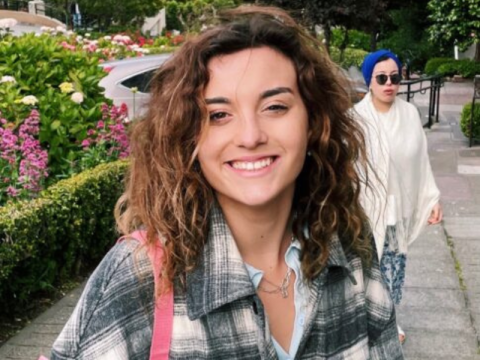The Intersections of Advocacy and Art: Exploring Reproductive Justice in Feminist Artwork
Since the beginning of time, art has presented itself as a powerful tool—a tool of expression with the ability to convey emotions and ideas that may often otherwise be difficult to share. Moreover, the power of art does not end with mere expression, but rather, art holds the capacity to unite communities, promote action, and foster collective healing. From street-art murals to graphical work on social media, art is everywhere, functioning as a catalyst to social action and a visualization of necessary change.
Defined by SisterSong as “the human right to maintain personal bodily autonomy, have children, not have children, and parent the children we have in safe and sustainable communities,” reproductive justice has risen as a major theme within the world of creative advocacy. Today, the majority of women are forced to stare into a future of uncertainty, as their reproductive freedoms are continuously attacked and challenged. For many female artists, this experience of patriarchal control has prompted emotionally compelling creative responses. These three women are a few of the many feminist artists consciously – creating to not only address the nuances of female experience, but also to capture the strength and courage entrenched in womanhood.
Feminist artist Judy Chicago is well-recognized for examining the importance of women in history and culture through large, collaborative projects. With a career in art that now spans over five decades, Chicago began focusing on feminist idealism in the late 1960s and continues to produce today. Chicago’s best known project, the Birth Project series (1980-85) depicted various images of childbirth, highlighting the beauty and eminence of motherhood.
2. Bisa Butler
Born in Orange, NJ, Bisa Butler is renowned for her vivid, quilted portraits celebrating African American life and her drive to evoke the untold histories of Black tradition. The youngest of four siblings, much of Butler’s work emphasizes the importance of family, community, and heritage. After the death of her stepmother, Butler fashioned Dear Mama (2019), a quilt she conceived to be “a love letter to all mothers.
3. Paula Rego
Frequently depicting stories, from traditional fairy tales to tense realities, the artistic style of Portuguese-born artist Paula Rego is far from stagnant. A master of pastels, painting and printmaking, Rego’s artwork often confronts issues of gendered inequality and speaks to feminist activism. In 1988, Paula Reno created the Abortion Series (1988), a collection of powerful paintings drawing attention to the dangers of criminalizing abortion.
Nonetheless, while no one can diminish the strength of these—or any artist’s message—the reality is that inequality continues to persist, including within formal “institutions” of the art world. In a data analysis of 18 major art museums in the U.S., it was revealed that 87% of the over 10,000 featured artists were male, and only 15% of featured artists identified as non-white, individuals of color. This raises the question of whose experiences are deemed important by the greater public sphere, just as it highlights the inaccessibility women and people of color face in promoting, and sharing their stories. In considering the obstacles that feminist artists face today and the power of their craft, it is integral for communities to uplift the work of their artists whose voices are so often minimized.
In New Orleans, Creative Community League (CCL) is just one of the many organizations working to move reproductive and sexual awareness into creative space. In addition to supporting artists through their Mini Artist Award Program each fall, CCL works to mobilize movement building, storytelling, and other forms of dynamic community outreach.
For more information about Creative Community League, please contact Leah Barry at lbarry2@tulane.edu or visit CCL on Facebook or Instagram at @creativecommunityleague.

